We’ve had torrential rain and freezing temperatures out here in New Jersey on our first two days in the studio cutting the new Vital Information record. Perfect weather to be inside all day with no windows making music!
Steve was in a day early before I arrived from LA just for setup, tuning, and getting sounds. The fact that he, at 68 years old, is still taking this amount of time to get the sound right is very inspiring. It reminds me that taking an entire day just to get sounds is actually a necessity and not a luxury.
I hear you saying “come on! that’s just not realistic when it comes to a low-budget recording session”. I am well aware that burning an entire day just on drum sounds isn’t going to be in everyone’s budget, but it’s really worth going back to the drawing board when planning a session to see if you can dedicate a little more time to setup.
I managed to do a half day on my last record in Spain this year, and we even had enough energy that night to start tracking. It made the world of difference to the overall project and put the band completely at ease when the red light finally came on to record. We didn’t have to eat into our first day of tracking with people still working on headphone mixes, or questioning mic choices.
If you have the option to record on multiple days, I highly recommend seeing if you can negotiate a lock-out with the studio so you have complete control over your schedule. In Spain, at La CasaMurada, I had my own engineer with me so I wasn’t dependent on the studio for a member of staff to be there when we wanted to record. If we came back from dinner at 11pm one night and wanted to track something, we could.
Facilitating this might mean going slightly out of town to a smaller studio (which may even work out cheaper for you!) and taking your own engineer. And if there’s a residential option where you can all stay together at the studio, it can really help maximize the amount of time you have to record. Not being stuck to a standard 8 hour “day” is very liberating!
The recording process itself is a real art. It’s something I consider to be a completely different discipline from any other kind of playing. You need a number of skills to be simultaneously at their peak, and because everything you play is being committed to tape, there’s no “we’ll tighten that up on tomorrow’s gig” mentality to rely on.
Photo: Jacek Duda
I love the way things improve over a series of shows on the road, so my goal in the studio is to always try and recreate that level of playing you get to 5 or 6 days into a tour. I booked a set at the Bitter End in NYC with my trio on the first night of tracking to help accelerate that process and get my chops feeling loose. This was especially important as I haven’t been playing live at all since finishing the European tour with Bob Reynolds over 6 weeks ago.
I remember my early recording sessions as a sideman very vividly. It really took me a while to be able to deal with all the elements the studio throws at you on top of just being a bass player. I think playing on headphones was probably the biggest challenge. You’re suddenly reduced to these little speakers over your ears, and you lose all the feeling of low end and air moving that you’re used to from from your amp.
This is all about the “real vs. feel” concept I’ve been talking about on the podcast lately. You need to learn to match up what you hear in the headphones with what you want to hear when you get out into the control room to listen back to a take. They are two really different things, and it can be quite distracting trying to reconcile that fact as you record. I made a major breakthrough in the studio for myself mentally when I stopped trying to compensate for the unfamiliar headphone sound, and just trusted that what I’m playing is still going to sound like me on the track.
Sight-lines are another big part of a successful session. I’m in a booth with an amp for this session which means I only get to see Steve through the glass, and I have to watch Manuel on the TV monitor up on the wall. So far this has been great, and communication in terms of cues for arrangements has been perfect. Always take the time to make sure you’re as comfortable as possible before you hit the record button.
The amp, although it has a mic on it, is really just for monitoring and we’re going to use mostly DI in the mix. If you have the luxury of an iso booth and can use an amp, it can really help fill in the parts of your sound the headphones can’t accurately recreate.
It’s been a blast so far, and I’m stoked we still have three more days of tracking to complete the project. Two of my heroes are going to be guests on the record. One in-person on Saturday which is saxophonist George Garzone, and one overdubbing next week which is Mike Manieri on vibes.
More soon,
Janek

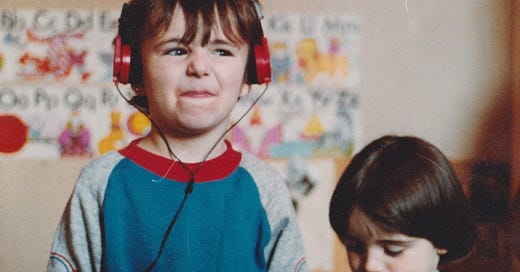


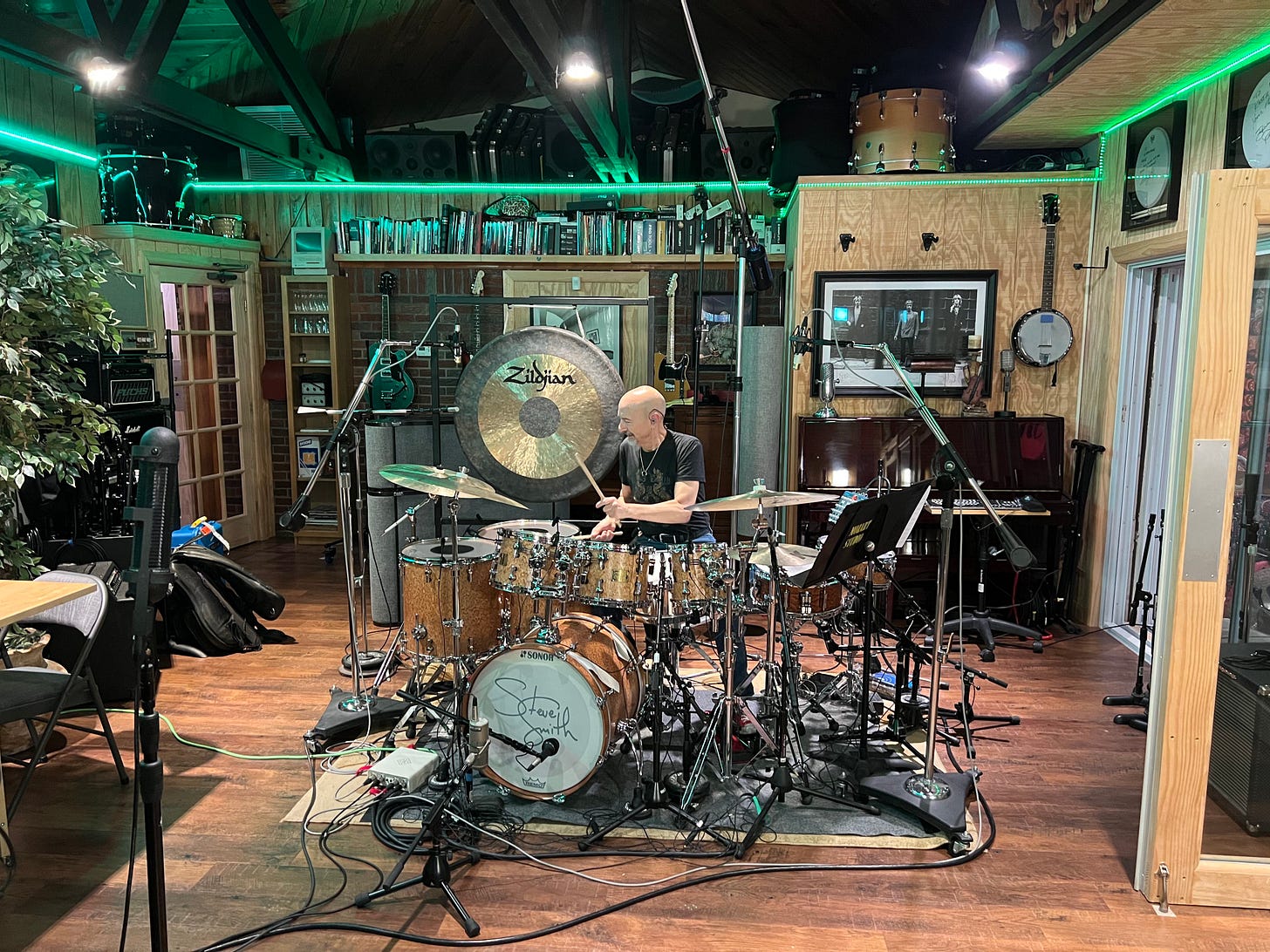
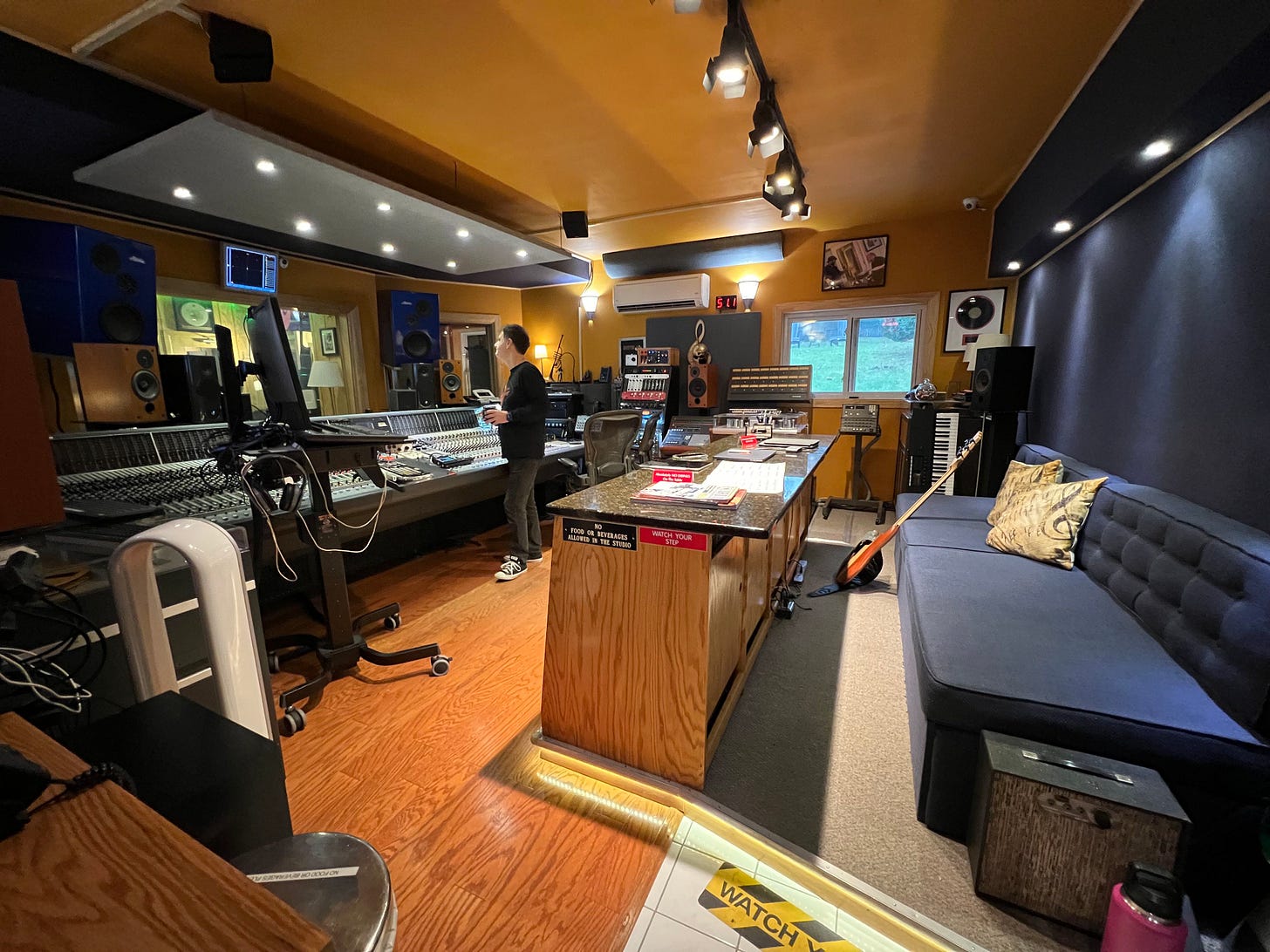
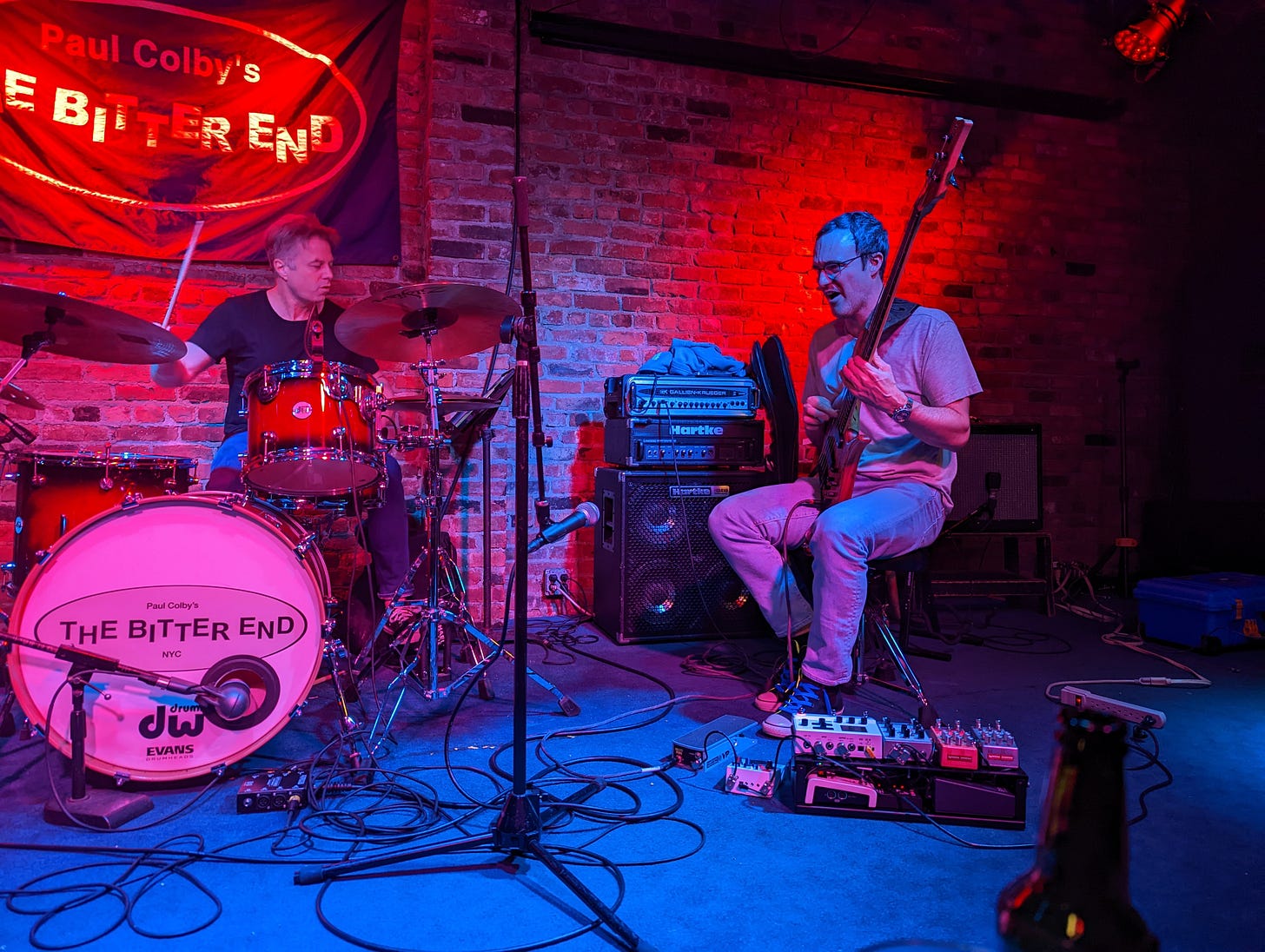

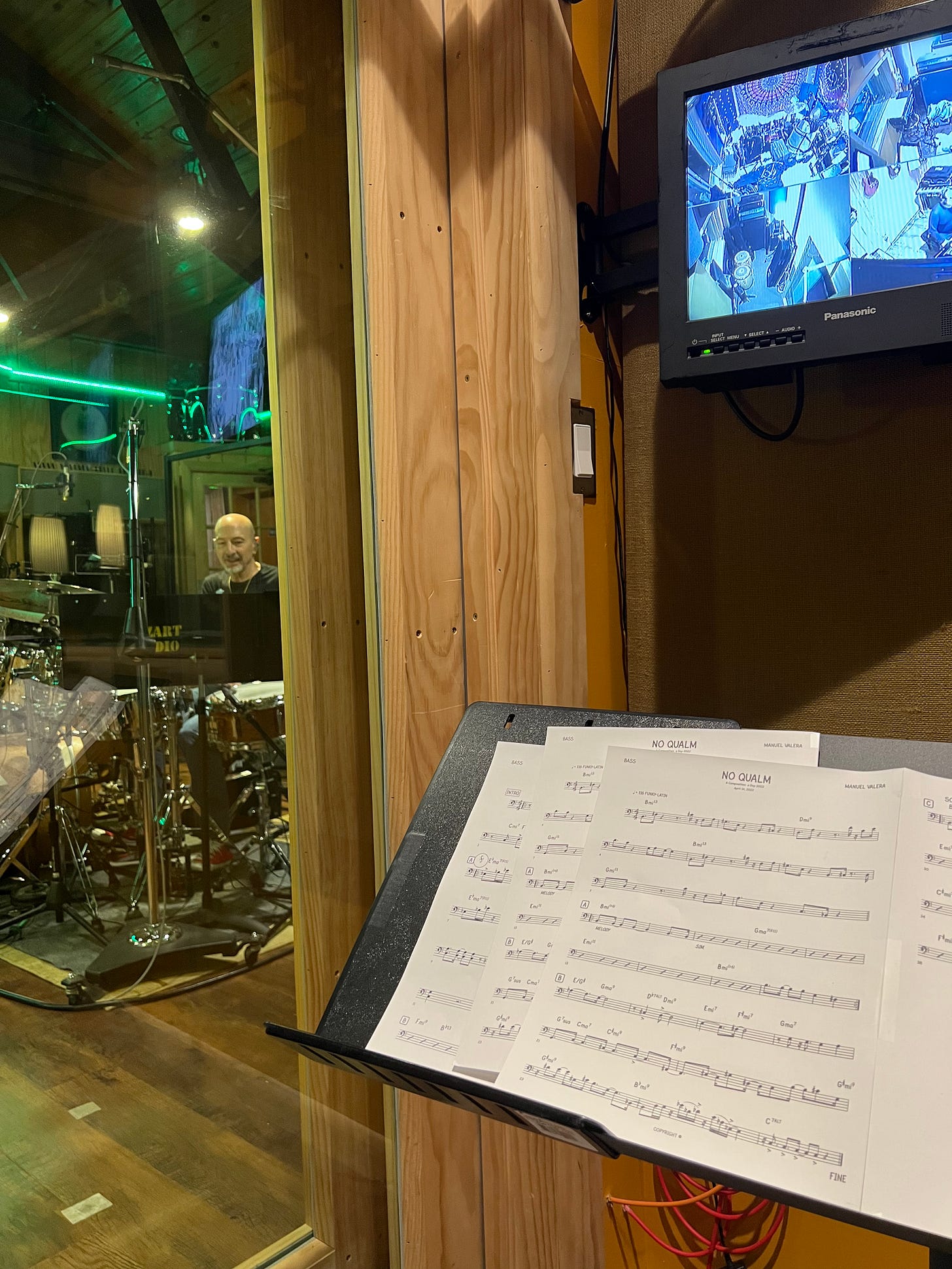
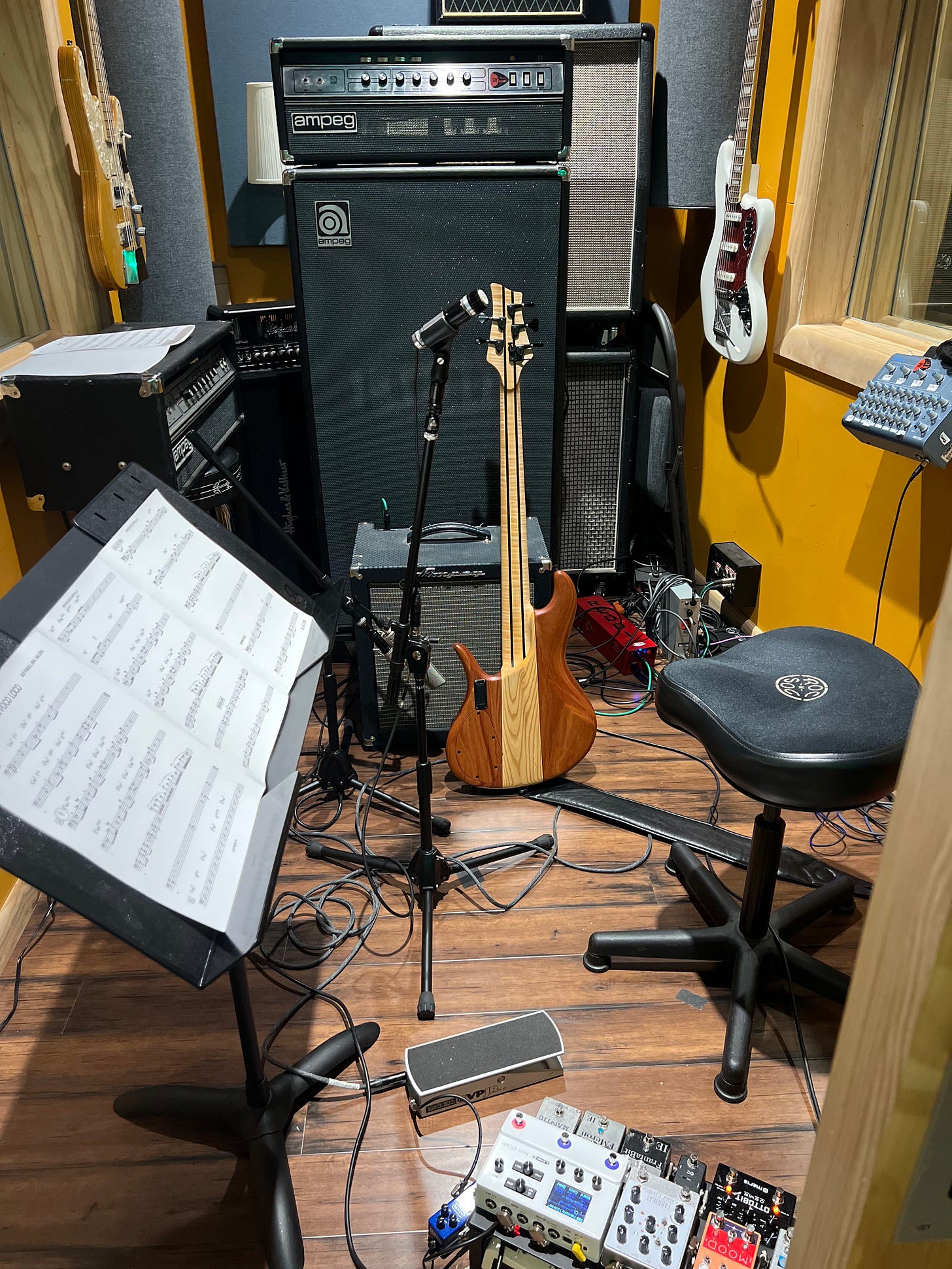
Lot of what you said struck a chord. I have not spent huge amounts of time in the studio performing, more time on the other side of the glass, and it’s been quite a while since those days. I agree 100% being comfortable is very important, there was so much of my concentration making sure the piece was played with all the time & musicality I could fit in, at the same time making sure I didn’t fluff a passage. Then, on the other side of the glass making sure everything was comfy and easy for the musos so I got the most out of them. I remember reflecting how much effort I’d put into making sure I didn’t blow it that when I was in the hot seat, I spent heaps of effort trying to get the musos to not worry about mistakes to try to get more performance from them, such a balance and that time you spoke about preparing is a part of that. If it sounds good, nice clear balance, the performance seems much more organic. Thanks, I enjoyed this one. Brought back memories, and envy from wanting to be in there again!